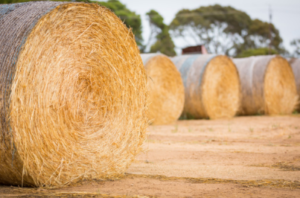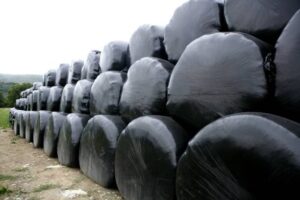Home » Farming
Category Archives: Farming
Baling Twine: Natural Fiber Baling Twine
Natural fibre baling twine is a popular choice for farmers. It’s durable, biodegradable and doesn’t contribute to pollution in landfills.
It’s rot and mildew-resistant, making it perfect for outdoor storage. It works flawlessly with square baler machinery and is treated to repel rodents.
It can be found in various colours and sizes, depending on each farmer’s needs. Buy quality natural fiber baling twine here now.
Durability
 A dependable twine is essential for the modern farmer. Non-biodegradable plastic twine left in round bales of hay can tangle around cattle’s heads, legs and hooves, causing severe injury or death. Ingestion of this twine can also cause digestive problems. That is why sisal twine is the preferred choice for all cattle farmers.
A dependable twine is essential for the modern farmer. Non-biodegradable plastic twine left in round bales of hay can tangle around cattle’s heads, legs and hooves, causing severe injury or death. Ingestion of this twine can also cause digestive problems. That is why sisal twine is the preferred choice for all cattle farmers.
Unlike poly twine, natural twine is digestible and tangles less easily. It is also more affordable than plastic twine, which makes it the better option for long-term investment in your farm.
While most people wouldn’t consider hoarding twine, horse people certainly do. It has endless uses, ranging from the utilitarian to the creative. Besides being used by bales, it is commonly used to tie wire tree baskets and for general tying needs. It can even help you train plants and vines to grow in specific directions. You can also use it for various crafts and garden tasks, such as sewing springs or buttons onto old clothes.
Biodegradability
The baling twine that binds hay or straw bales is critical for farmers and agricultural businesses. Using quality twine that won’t harm the environment or damage machinery is essential, and natural fibre twine is an excellent choice.
Bailing twine is biodegradable, so it doesn’t contribute to landfill waste and doesn’t clog sewers. It also makes for a great alternative to plastic bailing twine, which can harm animals and cause environmental harm.
Natural sisal baling twine works flawlessly with all square and round baler equipment and is treated to resist rot, mildew, and rodents. It’s also knotless for easy installation and possesses high tensile strength. Some farmers use a unique feed management strategy by using small, round bales bound with twine and leaving them in the field for livestock to graze through the winter. This approach helps reduce field compaction and improves spring regrowth.
Recyclability
Unlike synthetic twine, natural fibre baling twine can be recycled. Montana has a Twine Collection and Recycling Site in Laurel where you can safely dispose of your old twine. However, there needs to be more information available regarding this process.
Inadequately disposed of baling twine can harm the environment. It lingers in the soil and water and can entangle wildlife. It can also contaminate equipment, cause fire hazards, and present a trip hazard for livestock and humans.
It is essential to consider reusing or recycling baling twine when possible, as it does not decompose quickly and may pose safety risks. Livestock can accidentally ingest twine while eating, leading to digestive problems or choking. Twine can also become a tripping hazard and get tangled in machinery, creating dangerous situations for livestock and humans. It is also recommended that farmers explore alternatives to baling twine, such as net wrap, which can reduce harvest loss. Buy quality natural fiber baling twine here now.
Creative Uses
Twine is used for various tasks and is a versatile natural product. It has many uses in arts and crafts, such as embroidery and knitting, as well as in upholstery, rug-making, agriculture, and the cotton industry. It can be made from various natural fibres, including sisal, jute, hemp and hessian.
Jute baler twine is treated to resist rot, mildew and rodents. It is strong enough to work flawlessly in square baler machinery and provides consistent baling results. It is biodegradable and doesn’t contribute to landfill waste or clog sewers.
A discussion on the EquiSearch Horses Forum revealed that some horse people hoard baling twine. It is a handy accessory that has as many uses as duct tape!
Silage Wrap Australia
Silage wrap Australia is a great way to make your bale wrapping easier. They can help you wrap the entire bale faster and reduce labour costs. They can also help you improve the quality of your ensiled forage.
This high-quality, five-layered wrap from Venuspower has 320g tack for an air-tight seal and offers 12 months of UV resistance. It is compatible with all Paddock machinery and is ideal for wrapping round silage hay bales.
Grass Cuvva
 Unipak Grass Cuvva silage wrap is an economical, value-for-money option for wrapping non-challenging silage bales. Made from a 7-layer blown coextruded film, it is designed to maximise tack performance and offer good puncture and tear resistance. Grass Cuvva provides high levels of UV protection to guard against the Australian sun. It is a high-tack product with a 70% stretch rate and can be used in all machinery. It can be combined with a net replacement film, such as EconoMax 7 or Silopower 21, to improve bale formation and minimise oxygen ingress during the ensilaging process. Grass Cuvva is available in Green or Black and comes on plastic cores.
Unipak Grass Cuvva silage wrap is an economical, value-for-money option for wrapping non-challenging silage bales. Made from a 7-layer blown coextruded film, it is designed to maximise tack performance and offer good puncture and tear resistance. Grass Cuvva provides high levels of UV protection to guard against the Australian sun. It is a high-tack product with a 70% stretch rate and can be used in all machinery. It can be combined with a net replacement film, such as EconoMax 7 or Silopower 21, to improve bale formation and minimise oxygen ingress during the ensilaging process. Grass Cuvva is available in Green or Black and comes on plastic cores.
Triowrap
Manufactured by Trioplast, Europe’s largest producer of agricultural stretch film, Triowrap is a tried and tested silage wrap that offers farmers high reliability in all conditions. It has superior tack levels to guarantee the perfect wrap on every bale, increased puncture resistance, and improved strength in the transverse direction to handle those challenging square bale corners. It can be used on all wrappers and offers excellent UV protection for at least 12 months after wrapping. It also has high adhesive power to seal the valuable crop hermetically.
In addition to the high-performance characteristics of the film, it has an oxygen barrier that helps prevent oxidation of the forage. This is important for maintaining a high silage quality and is especially beneficial when harvesting the crop early or for long-term storage. The film is also available in various sizes to suit all needs.
This unique, blown film is made from carefully selected raw materials and several additives. Its multilayer construction and a blend of many components provide the essential features for a good wrap film, such as adhesion, bonding, stretching, colour, tear strength, puncture resistance, and high UV protection. It also has a very smooth surface.
Trioplast has developed the first premium silage wrap Australia film based on post-consumer recycled (PCR) material in line with the company’s focus on sustainable plastic use within farming. The new TriO2 movie offers good oxygen barrier properties and is a single-material solution without barrier materials like EVOH or PA. It is 100% recyclable and has a lower carbon footprint than virgin-based films.
The film is easy to work with and has excellent tensile strength, even in the corners of a bale. It can be cut easily with a blade or knife and is suitable for round and square bales. It has UV protection of at least 12 months and is water-resistant. It can be used in conjunction with a plastic core for extra protection.
The film is available in various colours, including pink, green, and yellow. Coloured wraps can help raise awareness of a charitable cause or distinguish between different silage cuts.
Harvest Advantage 5
The Harvest Advantage 5 blend is a good choice for dairy-quality silage wrap Australia because it contains high levels of crude protein and has high palatability. It can be planted in the fall to provide late-fall grazing for herds and continue to produce until spring. The mix contains alfalfa and grasses that can be harvested at different stages. The grasses can be harvested at the boot stage, and the alfalfa at the bud to early bloom stage. This will help maximise the yield of digestible forage per acre. The blend is well adapted to the southern region and can be planted with minimal fertiliser and water.
For best results, harvesting silage requires several management practices, including proper chopping to exclude air from the forage, crop maturity, and moisture content. In addition, it is essential to use an adequate silage filler and pack the silage tightly, distributing and compacting it evenly. Proper packing also helps to exclude oxygen and limit air penetration at exposed surfaces during storage, feed out, and transport, reducing dry matter losses.
Round bale silage should be wrapped as soon as possible after making. This can prevent spoilage and improve nutrient composition. Bales should be covered at 50 to 60 per cent moisture, preferably within two hours after baling. A delay in wrapping increases the risk of oxygen exposure and unfavourable fermentation. Bagged silage should be stored in a clean, weed-free site and inspected every two weeks for damage.
Plastic covers should be weighted to prevent air infiltration, and edges must be secured to avoid billowing or flapping. In addition, the ensiling site should be sloped to drain rainwater away from the silage mass. Full-casing tires have traditionally been used to weigh silage covers, but half tires are becoming increasingly popular. They reduce the number of tires needed, eliminate mosquito breeding grounds, and enable neater stacking when not in use.